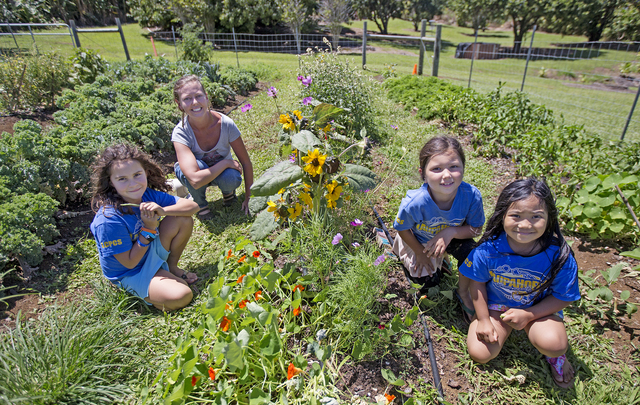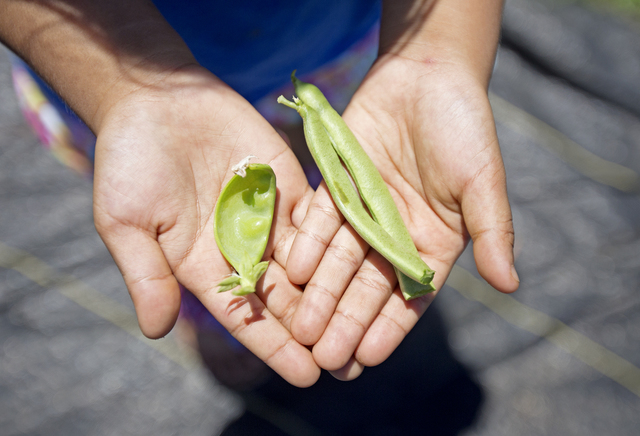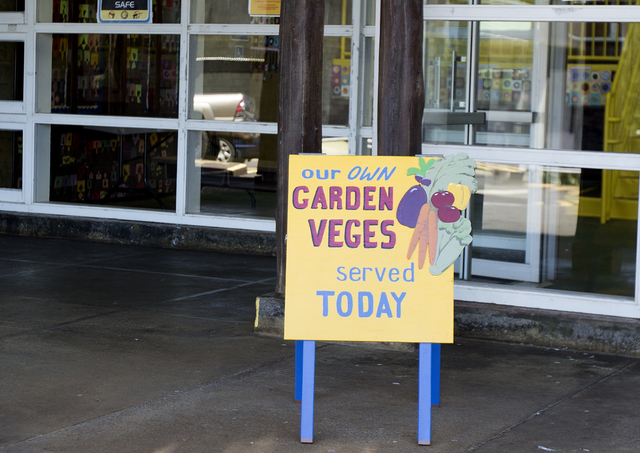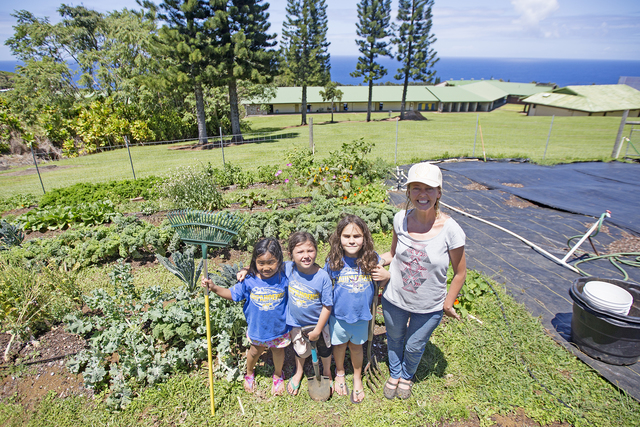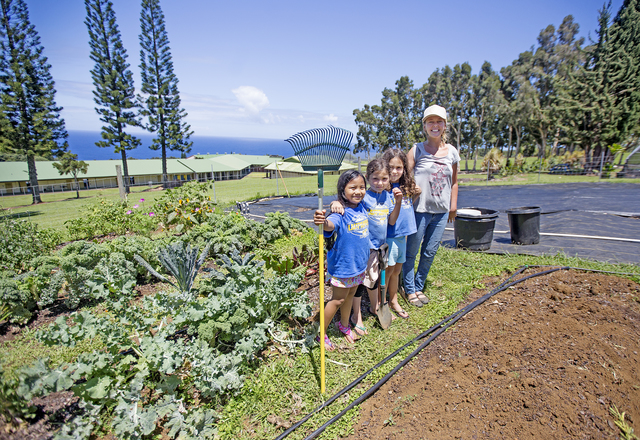Homegrown and healthy: Farm to school bill passes
Big Island schools are one step closer to getting homegrown meals in their cafeterias.
ADVERTISING
SB 376, a bill creating a statewide farm to school program, was signed into law this week by Gov. David Ige after unanimously passing both legislative chambers in May. The bill also funds a one-year program coordinator position in the Department of Agriculture.
Lt. Gov. Shan Tsutsui will work with the new coordinator and the state departments on the initiative.
“This program will ensure that our kids have nutritious meals as they learn about locally grown produce and cattle,” Tsutsui said in a press release. “This is a tremendous opportunity.”
The bill was introduced by a coalition of senators including Josh Green (D-Kona) and Russell Ruderman (D-Puna, Ka‘u). Ruderman, owner of Island Naturals, formed a local food caucus in his second year as a senator, and has advocated for a more sustainable food system for years.
“I think sometimes it takes a few years for an idea to push through the legislature,” he told the Tribune-Herald Friday. “There’s also a growing sense of frustration that we have not been able to get local food into the classroom. It’s becoming a louder and louder chorus that this is something that we should do.”
“I’m very excited about this,” Ruderman continued. “It’s a small step forward, but hopefully it’s the beginning of many steps.”
The bill went through several iterations before its passage. Initially, the plan was to create two two-year coordinator positions: one within the Department of Education in addition to the Department of Agriculture.
Establishing a long-term position remains a goal.
“This one position is really intended to be a catalyst, to find ways to make some changes,” Ruderman said. It won’t be a cure-all, he said, but it is a start.
“I don’t want to underestimate the amount of work that will be needed,” said Kyle Datta, general partner at the Ulupono Initiative.
The Oahu-based Ulupono Initiative is a social investment firm that has been heavily involved in the local food movement. Grants from the initiative kick-started and continue to help fund the Hawaii Island School Garden Network, run by the Kohala Center.
School gardens, which allow keiki to not only grow food but to make better connections between their classroom work and the real world, are a key component of farm-to-school programs. There are 63 school gardens on the Big Island, and the Hawaii Island School Garden Network is the oldest in the statewide hui.
“This movement has grown up through the grassroots, community to community, school to school, grant to grant,” said Lydi Morgan Bernal, coordinator for the Hawaii Farm to School and School Garden Hui. The partnership with state government was a chance to accelerate and solidify the movement, she said.
In order to get more local food into the schools and on menus, there will need to be increased collaboration between farmers, distributors, community organizations, and state agencies.
“In terms of improving school food through increasing local purchasing, a lot of this is about increasing the supply and basically putting the pieces of the food system together,” Morgan Bernal said.
Collaborators also must navigate the built-in hurdle of Hawaii’s statewide public school district.
“The big giant nut that needs to get cracked is the restrictions that require the entire 256-school system (to work) with one vendor,” Ruderman said. “We have to overcome the tremendous inertia to change.”
Charter schools, particularly those on the Big Island, are “shining examples” of working with the local market, Ruderman said. Datta mentioned a recent Ulupono Initiative collaboration with Parker Ranch that had helped get more local meat into schools.
“That was a new, good thing,” he said. “One of the successes.”
Creating more food hubs, where farmers come together to distribute their crops, is another way to get people involved.
“I think one of the important insights is that it doesn’t have to be the exact same suppliers statewide,” Datta said. “You can let local agriculture scale up to the community.” He said one of the early missteps in launching statewide farm to school was trying to get local producers to support the needs of the entire state as opposed to their specific areas.
“Maui kids eating Maui pineapple, Oahu kids eating Dole pineapples,” he said. “There’s a lot of things we should have more of that are completely possible.”
Ruderman said that if the local movement can gain more of a foothold in the school system, it will go a long way towards solving Hawaii’s food self-sufficiency problem. A recent study by the Pacific Regional Integrated Sciences and Assessments Program found that 92 percent of Hawaii’s food is imported.
“It’s worth 300 million a year to the state in direct food purchasing costs, not even considering side benefits of employment and less shipping costs,” Ruderman said.
Email Ivy Ashe at iashe@hawaiitribune-herald.com.


